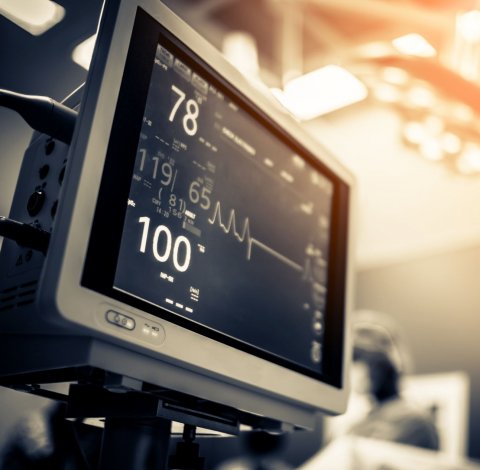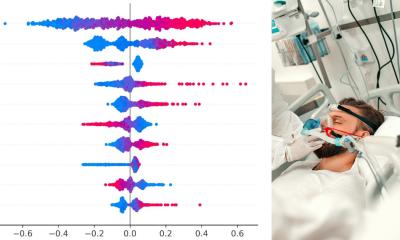News • Intensive care & AI
Machine learning model predicts ICU patients' mortality risk
A research team at Universitat Autònoma de Barcelona (UAB), in collaboration with the Hospital de Mataró, developed a new machine learning-based model that predicts the risk of mortality of intensive care unit patients according to their characteristics.

Image source: Shutterstock/WHYFRAME
The research was published in the latest edition of the journal Artificial Intelligence in Medicine, with a special mention as a "Position paper".
Under the framework of Artificial Intelligence, machine learning allows a model to gain knowledge based on the information provided by available historical data, and automatically modifies its information when new information appears. One of the current challenges is the creation of models with which to make personalised medical predictions, and one of the areas in which artificial intelligence can be of great help is in deciding how to proceed with intensive care unit (ICU) patients. This process is complex and comes at a high cost, and depends on the inherent variability of the opinion of specialists, based on their experience and instinct. Therefore, to improve the quality of care in the ICUs, it is important to set down protocols based on objective data and on an accurate prediction of a patient’s risk of mortality according to their characteristics. In this sense, machine learning tools may be of great help to medical experts.
A group of researchers led by Dr Rosario Delgado from the Department of Mathematics of the UAB, in collaboration with Head of the ICU at Hospital de Mataró Dr Juan Carlos Yébenes, UAB associate lecturer Àngel Lavado from the Information Management Unit of the Maresme Health Consortium, and José David Núñez-González, PhD student of the UAB Department of Mathematics, used machine learning tools to create a model capable of predicting the risk of mortality of ICU patients, based on a real database which also served to validate the model. The model will aid in the decision-making process of healthcare workers by improving the prediction of premature deaths, making medical decisions about high-risk patients more efficient, evaluating the effectiveness of new treatments and detecting changes in clinical practices.
The use of this model represents a clear improvement in traditional approaches, consistent with predicting the risk of mortality based on the Acute Physiology And Chronic Health Evaluation (APACHE) score – a questionnaire widely used to assess a person’s state of health with the help of different indicators. The new model makes use of an estimated logistical regression that was validated in previous groups of patients. Researchers were able to demonstrate experimentally that the new model they created overcomes the weak points of traditional approaches, offering good results and presenting itself as a better alternative.
This is a useful and promising methodology, and has important clinical applicability from the moment in which it can help physicians make patient-tailored medical decisions
Rosario Delgado
The predictive self-learning prognosis model created by researchers consists in a set of Bayesian classifiers used by assigning a life prognosis label (live or die) to each individual, according to traits such as demography, gender and age; the Charlson comorbidity index; their place of origin; the cause of admission; the presence or lack of sepsis; severity reached in the first 24 hours after aadmission; and the APACHE II score.
Researchers improved the model’s prediction through a combination of individual predictions of each classifier designed in a way that the faults of some predictions could be compensated with other correct predictions, and taking into account the imbalance represented by a low proportion of patients dying in the ICUs. The model predicts the cause of death of patients at a high risk, as well as the outcome of patients at a low risk of dying. This type of model is known as a hierarchical predictive model, given that there are two stages of prediction. “The hierarchical predictive prognosis model we have introduced has a good predictive behaviour, and it also allows studying which of the patient’s traits are the most decisive, which can become risk factors, in assessing their risk of death. It also can be extrapolated to compare different ICUs, or in a longitudinal study to analyse improvements through the timing of protocols in specific ICUs”, explains Dr Rosario Delgado. “This is a useful and promising methodology, and has important clinical applicability from the moment in which it can help physicians make patient-tailored medical decisions, and also for health authorities in their management of available resources”, she concludes.
Source: Universitat Autònoma de Barcelona
26.07.2021










